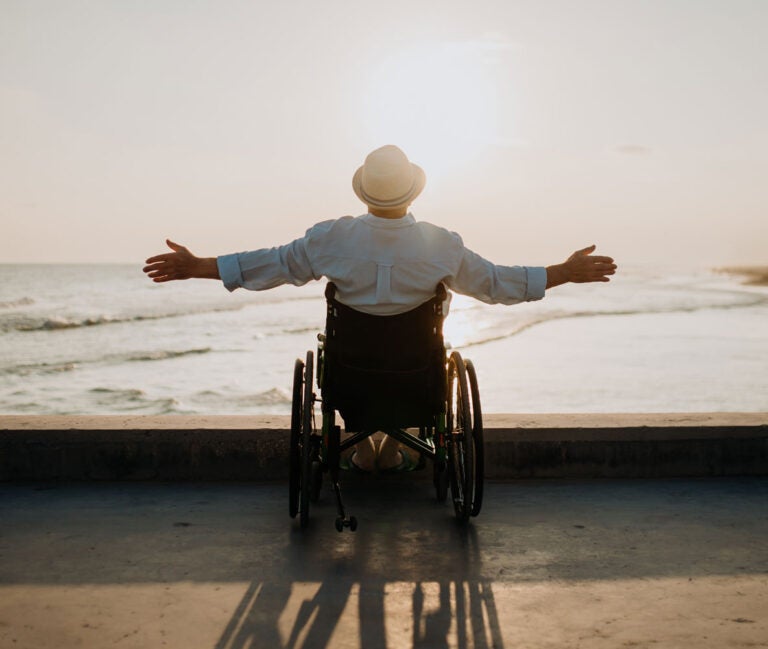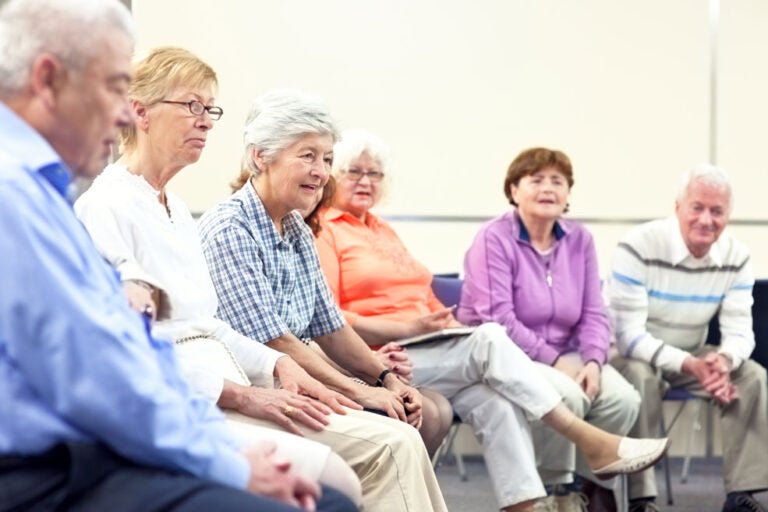Retirement is often billed as an opportunity to do the things that time or budgets made impossible in younger years. While it’s a great time to start crossing items off the bucket list, aging brings physical changes and challenges that can threaten to derail ambitious travel plans.
“For years, I didn’t travel or go to theme parks because I was terrified of the walk of shame,” says Jason Vaughn, a travel expert who shares tips at FatTestedTravel.com. “I was worried about what happens if I got to the front of the line and couldn’t fit on the ride. Everyone watches you as you leave the line.”
When he got up the courage to look deeper into accessible travel, he found that there are parks, tour companies, and cruise ships to enjoy travel, even with physical limitations.
He’s not the only one. Todd DeVries, a mental health worker, is low-sighted and considered legally blind. Despite his physical limitations, he travels to multiple countries and enjoys activities like hiking and kayaking
While the world is far from friendly to those with physical limitations, some inroads have been made in recent years to be inclusive to those with bodies of different sizes and disabled travelers who might have issues with mobility or sight.
Mobility and Travel
Kieran Sheridan, a board-certified physiotherapist based in the United Arab Emirates and cofounder of GulfPhysio.com, has worked closely with people of varying physical abilities and witnessed their challenges when traveling.
“Older passengers on cruise ships might have limited mobility due to osteoarthritis or other conditions,” Sheridan says. “In these cases, assigning them staterooms near elevators and providing mobility aids like walking sticks and wheelchairs can help make travel more accessible.”
Vaughn points out that plenty of non-seniors also need mobility aids. Some theme parks cater to individual’s needs, but many have to ride the carousel. Vaughn cites Disney World in Orlando, Florida, as one of the more accessible parks, offering different rides accessible to those who use wheelchairs.
Another one of his favorite amusement parks is Morgan’s Wonderland in San Antonio, Texas. Founded in 2010, the park focuses on accessibility and providing positive experiences for people of varying abilities. Vaughn says it’s one of the only parks of its kind.
If uneven beach terrain is a deal breaker, before saying no to a beach outing look into your options. Many beaches have invested in all-terrain track chairs that make the beach accessible for everyone. California, Wisconsin, and Michigan all have programs that make these chairs available for free or a small fee.
Some additional companies that specialize in accessible tours include Iceland Unlimited, Tapooz Travel, Wheel the World, and Morocco Accessibility Travel.
Size-Inclusive Travel
Vaughn’s main focus, though, is on size-inclusive travel.
“From airplanes to roller coasters and even some hotel rooms, travel isn’t always friendly to larger people,” he says.
However, Vaughn’s research has led him to learn more about how larger bodies can experience more comfort when traveling. One of his favorite finds was that, for decades, Southwest Airlines has provided a free second seat for larger travelers.
“You can buy a second seat and have that refunded, so that second seat is free,” Vaughn says. “I used to focus on road trips, and I still love a good road trip. But now I can fly in relative comfort, too.”
Disney World is also a model of accessibility when it comes to size-inclusive travel, Vaughn says, adding larger seats to many rides so that travelers of multiple sizes can participate. He also suggests calling hotels to find out what rooms they have available. Ask whether they’re accessible to people of different sizes and mobility needs.
Another company that offers size-inclusive travel experiences is Stellavision Travel.
Creating a More Inclusive Travel Environment
DeVries, the visually impaired traveler mentioned in the introduction, is an advocate for better environments for pedestrians and travelers with disabilities. He knows what it’s like to try to navigate an environment designed mainly for sighted people. DeVries has worked with cities to create travel paths more compliant with the Americans with Disabilities Act (ADA) and show how it’s possible to enjoy various experiences with low sight.
Some of the ways non-sighted or low-sighted people can prepare for travel include:
- Consider traveling with a family member or friends who can help
- Make sure you have updated your assistive devices
- Research apps like Be My Eyes that connect you with volunteers who describe objects
- Know quarantine requirements for canine assistants and make sure vaccinations are up-to-date
- Research destinations before visiting to find out if the locations are accessible
Other agencies that provide inclusive travel experiences for a variety of people include Travel for All and Easy Access Travel.
“Airports, hotels, cruise lines, and many other places that people use for travel should be more accessible and adapt to the needs of more people,” Sheridan says. “Having the world opened up is a right we should all enjoy.”
This article is intended for general informational and educational purposes only, and should not be construed as financial or tax advice. For more information about whether a reverse mortgage may be right for you, you should consult an independent financial advisor. For tax advice, please consult a tax professional.




